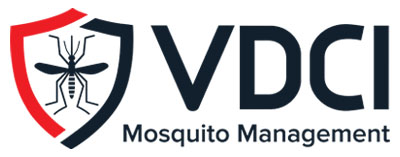
What is Dengue and How Does it Spread?
Dengue virus is transmitted by certain Aedes mosquitoes and considered a major global threat as our world’s urban landscape grows. Beyond the increase in desirable habitats for the container-breeding species, the virus has four strains (multiple serotypes) making it complicated for medical professionals to manage. Chikungunya virus shares similar symptoms to dengue and provides those bitten with immunity from future chikungunya infections. Unfortunately, with multiple strains of dengue, an individual is more likely to be hospitalized or die if infected with more than one serotype. Those previously infected or individuals with a weakened immune system should take even greater precautions.
| Symptoms of Dengue Infection |
- When symptoms occur, they typically begin with a high fever (104°F) three to seven days after exposure.
- Along with the high fever, individuals usually experience at least two of the following symptoms: headaches, pain behind the eyes, significant joint and muscle pain, fatigue, nausea, vomiting, skin rash two to five days after the onset of the fever.
- Other symptoms can include mild bleeding and easy bruising.
| Treatment of Dengue Infection |
- Currently, no specific medications exist to treat dengue virus infection or disease.
- Treatment for symptoms includes rest and the use of acetaminophen to relieve fever and pain. Avoid aspirin.
- Patients should also be advised to drink plenty of fluids if diagnosed.
- If anyone has recently traveled to a known endemic area and are displaying any of the symptoms of dengue infection, they should consult their physician immediately.
Severe dengue (dengue hemorrhagic fever) can occur with warning signs three to seven days after symptoms began. If temperature declines and the following symptoms surface seek immediate medical attention: severe abdominal pain, continued vomiting (may include blood), bleeding nose or gums, rapid breathing, or fatigue.
New Dengue Fever Vaccine
![]() There is still no cure for dengue fever; however, in April 2016, the World Health Organization (WHO) endorsed the world’s first-ever vaccine for dengue fever. Many governments are reviewing the vaccine for approval in their country and manufacturers are determining how to manage supply and demand issues. The vaccine is given over the course of a year via three injections. While additional details continue to emerge on the vaccine, the development is a great step for a virus that threatens to infect nearly half of the world’s population.
There is still no cure for dengue fever; however, in April 2016, the World Health Organization (WHO) endorsed the world’s first-ever vaccine for dengue fever. Many governments are reviewing the vaccine for approval in their country and manufacturers are determining how to manage supply and demand issues. The vaccine is given over the course of a year via three injections. While additional details continue to emerge on the vaccine, the development is a great step for a virus that threatens to infect nearly half of the world’s population.
Dengue and the United States
The United States has experienced local outbreaks of dengue in Hawaii (2015), near the Texas-Mexico border (2013), and in Florida. Except for 2017, Florida has reported locally-transmitted cases of dengue annually between 2010 – 2018. Larger outbreaks have occurred within U.S. Territories such as Puerto Rico, the U.S. Virgin Islands, and U.S.-affiliated Pacific Islands. A portion of the United States is at a higher risk because of climate and the presence of certain Aedes mosquitoes.
A Global View of Dengue
Dengue is most often transmitted by Aedes aegyptiand Aedes albopictus mosquitoes. These species are also responsible for the transmission of chikungunya virus, yellow fever virus, and more recently Zika virus. The below maps highlight parts of the world that provide a suitable environment for each species.


Know Your Aedes Mosquitoes
Aedes aegypti, the yellow fever mosquito, is characterized by a silvery-white “lyre-shaped” pattern of scales on its thorax. It is a peridomestic species found not far from human dwellings. They are primarily early morning or late afternoon feeders, but females can also take a bloodmeal at night under artificial illumination. Typically, Ae. aegypti fly only a few hundred yards from their breeding sites.
Aedes albopictus, the Asian tiger mosquito, is a black mosquito with distinctive silvery-white scales and a white “racing stripe” on its thorax. First reported in the USA in 1983, this species has become one of the most challenging mosquitoes to control and, unlike most mosquitoes, actively bites during full sunlight. Beyond being a daytime biting nuisance, the Asian tiger mosquito is also capable of transmitting several diseases, including West Nile virus, Zika, chikungunya, and several forms of encephalitis as well as dengue. The presence of this invasive species has become a major public health concern in many locations across the country.
Both species utilize containers to breed, and educating the public on how to eliminate their backyard larval habitats
is one key to keeping these invaders under control. Larvae can be found in a variety of artificial containers, including buckets, tires, cans, and flower pots. Homeowners should also inspect rain gutters for clogs, gardening equipment, and backyard children’s toys.
Controlling Aedes aegypti/albopictus and Dengue
An Integrated Mosquito Management (IMM) program is essential to helping prevent mosquito bites and transmission of serious vector diseases in the United States. As part of an effective IMM program, VDCI recommends a 4-pronged approach to target all phases of the mosquito’s life cycle.
Community understanding of how to properly eliminate mosquito breeding habitat and take personal protective measures is critical. Furthermore, distribution of educational pieces is important for treating symptoms and aids public health officials in identifying dengue problem areas.
2: Surveillance
In order to understand the risk and address the threat appropriately, it is critical to determine the mosquito distribution, density, and species composition throughout the target area. Surveillance will also provide direct evidence of an increased transmission risk of dengue virus.
When mosquito larvae are detected in an area, trained and experienced ground crews reduce breeding habitat when possible, then preferentially apply Bacillus thuringiensis var israelensis (Bti) to remaining areas of standing water, stagnant pools, and water-holding containers. Aerial and ground application of larvicide via ULV equipment can provide control in hard to reach container habitats.
VDCI recommends the deployment of two-person teams to conduct targeted ULV applications combined with residual “barrier” applications via backpack applicators to mosquito harborage areas near homes and other structures. In addition, when the disease risk warrants it, truck and aerial ULV applications should be utilized to reduce the adult mosquito population. When combined with our larvicide efforts, these methods have proven highly effective at significantly reducing local populations of the target mosquitoes.
VDCI is a company built on the foundations of public health, ethics, professionalism, and technical expertise. We establish vector management programs that are based on an understanding of the underlying vector’s ecology and rooted in the current science of environmentally sound control measures.
[backlink]


